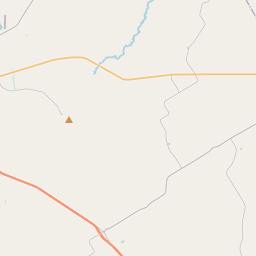First Presbyterian Church of Lott
Historical marker location:






The railroad town of Lott was platted here in 1890 and in 1892 the area Presbytery established this church. A sanctuary, built that year under the direction of the Rev. J. W. Siler, was destroyed by a tornado in 1893. A second church building, erected in 1901, was destroyed by fire after being struck by lightning in 1939. A third sanctuary was completed at this site in 1942 and in 1951 a manse was built adjacent to the sanctuary. The congregation has traditionally supported a Ladies Auxiliary and a Sunday School, and continues to be active in national and foreign missionary activities
As one of the most visible programs of the Texas Historical Commission (THC), historical markers commemorate diverse topics in Texas history, including: the history and architecture of houses, commercial and public buildings, religious congregations, and military sites; events that changed the course of local and state history; and individuals who have made lasting contributions to the state, community organizations, and businesses.
The first oil well in the United States was drilled in Texas in 1859. The discovery of oil transformed the economy of the state and helped to make Texas one of the wealthiest states in the nation.
In the early 19th century, European settlers began to arrive in Falls County, drawn by the fertile soil and abundant natural resources. The county was officially established in 1850, and the town of Marlin was designated as the county seat. The development of railroads during this period further spurred the growth of the region, allowing for easier transportation of goods and people.
During the Civil War, Falls County, like many other parts of Texas, heavily supported the Confederacy. The economy revolved around agriculture, especially cotton plantations, which relied on enslaved labor. However, the war brought multiple challenges to the county, including shortages of supplies and soldiers, as well as occasional conflicts with Union forces.
In the post-war era, Falls County faced a period of rebuilding and diversification. The reliance on cotton continued, but other industries such as livestock ranching and oil extraction began to play a significant role in the county's economy. Over the years, Falls County has gone through various changes and challenges, but it remains a vibrant community with a rich history tied to the land and its people.
Falls County Timeline
This timeline provides a concise overview of the key events in the history of Falls County, Texas.
- 1837 - Falls County is established by the Republic of Texas
- 1838 - The county seat is established in Perryville
- 1850 - Marlin becomes the new county seat
- 1861-1865 - Falls County residents serve in the Civil War
- 1873 - The Houston and Texas Central Railway reaches Marlin
- 1886 - The town of Lott is incorporated
- 1896 - The Marlin Female Institute is established
- 1910 - A serious cotton boll weevil infestation hits the county
- 1921 - The infamous Klan trials take place in Marlin
- 1953 - Falls County dedicates a new courthouse
- 1975 - Marlin State Hospital is designated a National Historic Landmark
- 1996 - The Marlin Democrat newspaper celebrates its 125th anniversary
- 2018 - Falls County celebrates its 180th anniversary